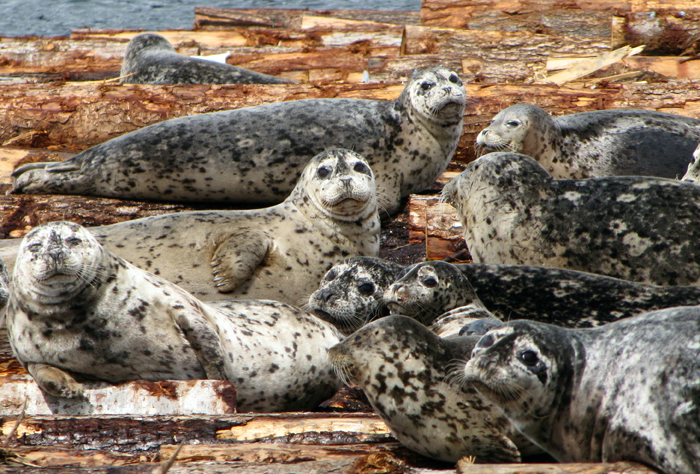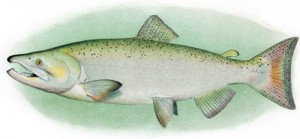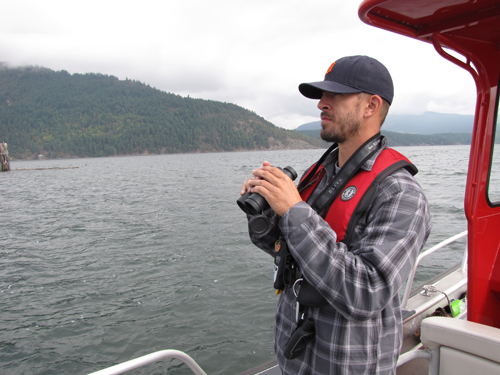Into the Field
Chinook and coho are two of British Columbia’s most valuable salmon species. However, their numbers are at an all-time low, especially in the Strait of Georgia. Dramatic declines in salmon abundance began in the 1970s as harbor seal numbers increased, which has led scientists (and fishermen) to suspect that seal predation may be impeding recovery of chinook and coho salmon.

Harbor seals in Cowichan Bay rest and give birth on floating piles of logs destined for a nearby saw mill.
Salmon have not returned to their historic levels, despite being harvested at relatively low rates for the last few decades. This lack of recovery might be due to loss of habitat, competition and climate change. However, previous studies suggest that harbor seals may also be playing a significant role.

Chinook salmon
Previous research has addressed how many adult fish are eaten by seals, but relatively little attention has been given to how many juvenile salmon are eaten during the spring, when young fish migrate from their natal streams into the marine environment. Predation on juvenile fish is much less visible than predation on adult fish, and may explain the poor recovery of salmon.
UBC Graduate Student Ben Nelson is studying whether seal predation on adults and juveniles is responsible for the poor recovery of salmon in Cowichan Bay on Vancouver Island. Numbers of chinook and coho salmon were once large in the Cowichan River, and have dropped to low levels in recent years, while the local seal population has nearly tripled since the late-1980s.
From April to November of 2014, Ben is observing seal behavior and collecting harbor seal “scats” to estimate the percentage of their diet that is comprised of salmon. Luckily, seals that inhabit Cowichan Bay spend a lot of time hauled out on log booms in the inner bay, making collection of scats simple and efficient. Residents of Cowichan Bay are assisting in counting the number of seals using the log booms.

Ben Nelson in the field.
The scat samples are being processed in a genomics laboratory at UBC to quantify the amount of salmon DNA in each sample. The diet information generated from these samples will be used to estimate the number of salmon eaten annually in Cowichan Bay, and will be incorporated into mathematical models that simulate the dynamics of salmon populations.
Ben’s study will ultimately help to understand how salmon respond to fishing, natural mortality (i.e., seal predation) and other environmental factors. The models will simplify a very complex ecological system, and will allow scientists and fisheries managers to test hypotheses about why salmon have declined. Results from the Cowichan Bay study will be used to make broader inferences about the Strait of Georgia ecosystem and the interactions between seals and salmon.
This research is being supported by the Pacific Salmon Foundation and the Canadian Fisheries Research Network.
Ben Nelson is an PhD candidate at UBC’s Marine Mammal Research Unit.
